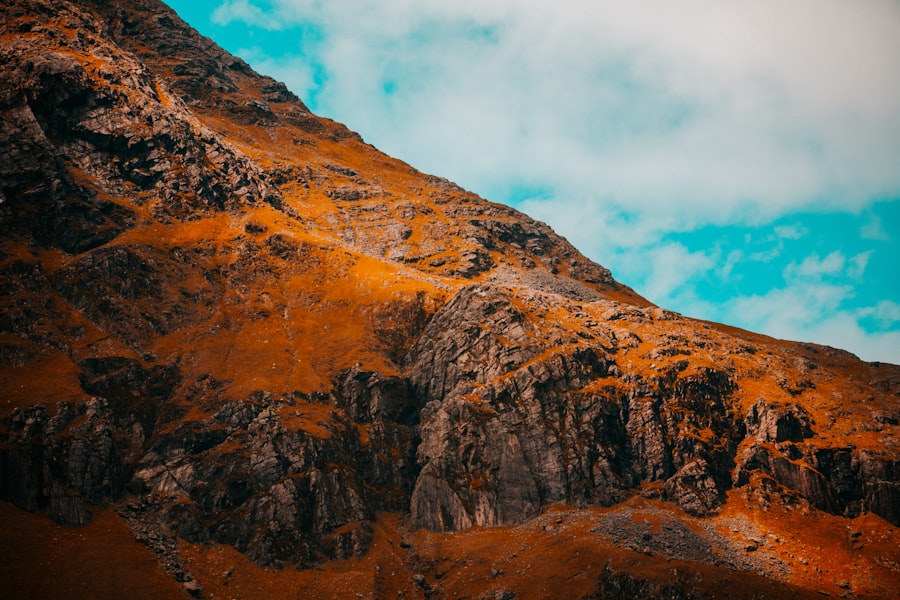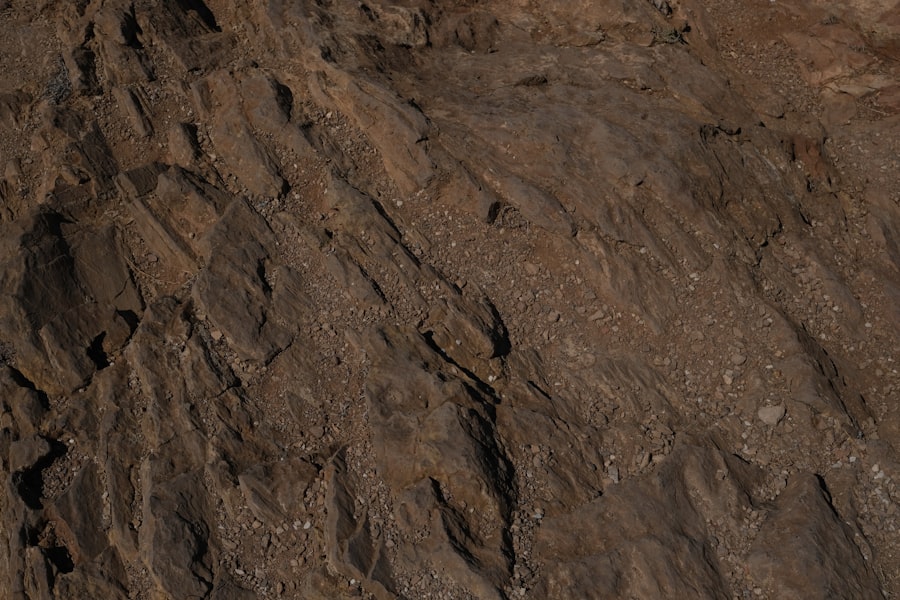Natural barriers have played a pivotal role in shaping human history, influencing the development of civilizations, and determining the outcomes of conflicts. These geographical features, which include mountains, rivers, forests, deserts, and more, serve as formidable obstacles that can hinder movement, limit access, and provide strategic advantages. Throughout history, societies have recognized the significance of these barriers, often using them to fortify their defenses against invasions or to delineate territorial boundaries.
The interplay between human activity and natural landscapes has created a dynamic relationship that continues to evolve. Understanding natural barriers is essential for comprehending how they have influenced migration patterns, trade routes, and military strategies. As civilizations expanded and encountered new territories, the presence of these barriers often dictated the paths they could take.
In many cases, natural barriers have acted as protective shields, allowing communities to thrive in relative isolation or providing them with a tactical advantage over adversaries. This article will explore various types of natural barriers and their implications for human societies throughout history.
Key Takeaways
- Natural barriers such as mountains, rivers, forests, deserts, islands, swamps, canyons, plateaus, and tundra play a crucial role in defense and security.
- Mountains and hills provide natural fortifications and obstacles for invading forces, making them difficult to traverse.
- Rivers and bodies of water act as natural moats, making it challenging for enemies to cross and providing strategic advantages for defenders.
- Forests and jungles offer dense and difficult terrain, hindering movement and providing cover for defenders.
- Deserts and arid landscapes create harsh and inhospitable conditions, deterring potential invaders and making logistics challenging.
Mountains and Hills as Natural Barriers
Mountains and hills stand as some of the most imposing natural barriers on the planet. Their sheer height and rugged terrain create formidable obstacles for both human and animal movement. Historically, mountain ranges such as the Himalayas and the Andes have served as significant divides between cultures and nations.
These towering formations not only hindered armies from advancing but also limited trade routes, forcing merchants to navigate treacherous passes or seek alternative paths. The isolation created by mountains often led to the development of distinct cultures and languages, as communities remained separated by these natural fortifications. In addition to their role in hindering movement, mountains have also provided strategic advantages for those who inhabit them.
High altitudes offer a vantage point for surveillance, allowing defenders to spot approaching threats from afar. The steep slopes and narrow passes can be easily fortified, making it difficult for invading forces to mount successful assaults. Historical examples abound, such as the use of the Alps during World War II, where the rugged terrain played a crucial role in shaping military strategies.
The presence of mountains has thus been a double-edged sword; while they can isolate communities, they can also empower them to defend against external threats.
Rivers and Bodies of Water as Natural Barriers

Rivers and bodies of water serve as vital natural barriers that have influenced human settlement patterns and military strategies throughout history. Their flowing currents create physical obstacles that can impede movement and transportation. Major rivers like the Rhine and the Mississippi have historically acted as boundaries between nations and regions, shaping political landscapes and facilitating trade.
The difficulty of crossing these waterways without proper infrastructure has often deterred invasions and allowed communities to establish defensive positions along their banks. Moreover, rivers can also serve as strategic assets in warfare. Control over a river can provide access to vital resources, including fresh water and transportation routes.
Armies have often sought to secure river crossings to maintain supply lines or launch offensives against adversaries. The importance of rivers in military strategy is exemplified by battles fought along their banks, where control over these waterways has determined the outcomes of conflicts. In this way, rivers not only act as barriers but also as conduits for commerce and communication, illustrating their multifaceted role in shaping human history.
Forests and Jungles as Natural Barriers
| Metrics | Data |
|---|---|
| Forest Area | 31% of total land area |
| Carbon Sequestration | 2.4 billion metric tons per year |
| Biodiversity | Home to 80% of terrestrial species |
| Protection from Erosion | Reduces soil erosion by 50% |
Forests and jungles present unique challenges as natural barriers due to their dense vegetation and complex ecosystems. These areas can be difficult to navigate, making them formidable obstacles for armies attempting to traverse or invade enemy territory. The thick underbrush and towering trees create a labyrinthine environment that can easily conceal movements, allowing defenders to launch surprise attacks or ambushes against invading forces.
Historical accounts reveal how dense forests have been used strategically in warfare, with guerrilla tactics often employed by smaller forces familiar with the terrain. In addition to their military significance, forests and jungles have also shaped cultural identities and lifestyles. Indigenous communities have thrived in these environments for centuries, developing deep connections with the land and its resources.
The isolation provided by dense foliage has allowed unique cultures to flourish, often leading to rich traditions and knowledge systems that are closely tied to the natural world.
Deserts and Arid Landscapes as Natural Barriers
Deserts and arid landscapes represent some of the harshest natural barriers on Earth. Their extreme temperatures, lack of water sources, and vast expanses of sand create formidable challenges for both human habitation and military movement. Historically, deserts like the Sahara have acted as significant deterrents to invasions, with armies often unable to sustain themselves in such inhospitable conditions.
The vastness of these landscapes can disorient travelers and make navigation exceedingly difficult, further complicating any attempts at crossing. Despite their challenges, deserts have also played a role in shaping trade routes and cultural exchanges. The Silk Road is a prime example of how ancient traders navigated arid landscapes to connect distant civilizations.
While deserts may serve as barriers in some contexts, they can also facilitate unique interactions between cultures that adapt to their surroundings. The resilience of communities living in desert regions highlights the complex relationship between humans and their environment, showcasing how adaptation can turn perceived obstacles into opportunities for growth.
Islands and Peninsulas as Natural Barriers

Islands and peninsulas present distinct forms of natural barriers that influence both human settlement patterns and geopolitical dynamics. Surrounded by water, islands often serve as isolated ecosystems that foster unique flora and fauna while also creating distinct cultural identities among their inhabitants. The geographical separation provided by water can lead to the development of unique languages, traditions, and social structures that differ significantly from those on the mainland.
Peninsulas, on the other hand, offer a blend of accessibility and isolation. While they are connected to larger landmasses, their protruding nature into bodies of water can create strategic advantages for defense. Historical examples abound where peninsulas have been fortified against invasions due to their natural geography.
The strategic importance of places like the Iberian Peninsula during various conflicts illustrates how these landforms can shape military strategies while also influencing trade routes across adjacent waters.
Swamps and Marshes as Natural Barriers
Swamps and marshes are often overlooked as natural barriers due to their less imposing appearance compared to mountains or rivers. However, these wetlands present significant challenges for movement due to their muddy terrain and dense vegetation. Historically, swamps have served as effective defensive positions for communities seeking protection from invaders.
The difficulty of traversing these areas has allowed defenders to maintain control over their territory while deterring potential aggressors. Moreover, swamps play a crucial role in maintaining biodiversity and supporting ecosystems that are vital for human survival. They act as natural filters for water systems while providing habitats for numerous species.
The ecological significance of swamps underscores their importance beyond mere physical barriers; they are essential components of the environment that contribute to overall ecological health.
Canyons and Gorges as Natural Barriers
Canyons and gorges are dramatic geological formations that create striking natural barriers across landscapes. Their steep cliffs and narrow passages can pose significant challenges for both movement and transportation. Historically, these formations have served as formidable obstacles for armies attempting to traverse enemy territory or invade new lands.
The Grand Canyon is a prime example of how such geological features can shape regional dynamics by limiting access while providing natural defenses for those who inhabit nearby areas. In addition to their military implications, canyons often hold cultural significance for indigenous peoples who have lived in proximity to these formations for generations. They may serve as sacred sites or sources of inspiration for local myths and legends.
The interplay between human culture and geological features highlights how canyons are not merely physical barriers but also integral components of cultural identity.
Plateaus and Mesas as Natural Barriers
Plateaus and mesas represent elevated landforms that create distinct natural barriers within various landscapes. Their height provides a strategic advantage for those who inhabit them while simultaneously posing challenges for those attempting to access them from lower elevations. Historically, civilizations situated on plateaus have enjoyed protection from potential invaders due to their elevated positions, allowing them to survey surrounding areas while maintaining control over vital resources.
The unique ecosystems found on plateaus often support diverse flora and fauna that differ from those at lower elevations. This ecological diversity can lead to rich agricultural practices among communities living on plateaus, further enhancing their resilience against external threats. The relationship between geography and culture is evident in how societies adapt to their environments while leveraging natural barriers for defense.
Tundra and Polar Regions as Natural Barriers
Tundra and polar regions present some of the most extreme natural barriers on Earth due to their harsh climates and challenging conditions. The frigid temperatures, permafrost, and limited vegetation create formidable obstacles for human habitation and movement. Historically, these regions have served as natural deterrents against invasions due to their inhospitable nature; few armies would willingly venture into such unforgiving environments.
Despite their challenges, tundra regions are home to resilient communities that have adapted to survive in extreme conditions. Indigenous peoples living in these areas possess deep knowledge of their environment, utilizing available resources sustainably while navigating the complexities of life in polar climates. The interplay between human resilience and environmental challenges underscores how even the harshest natural barriers can shape cultural identities.
The Importance of Natural Barriers in Defense
Natural barriers have played an indispensable role in shaping human history by influencing migration patterns, trade routes, military strategies, and cultural identities. From mountains that provide strategic advantages to rivers that delineate boundaries, these geographical features serve as both obstacles and opportunities for societies throughout time. Understanding the significance of natural barriers is crucial for comprehending how civilizations have evolved in response to their environments.
As humanity continues to navigate an increasingly interconnected world, the lessons learned from historical interactions with natural barriers remain relevant today. The interplay between geography and human activity continues to shape societies while highlighting the importance of preserving these natural landscapes for future generations. Ultimately, recognizing the value of natural barriers not only enriches our understanding of history but also informs contemporary discussions about defense strategies, environmental conservation, and cultural heritage preservation.
The natural landscape has often played a crucial role in thwarting invasions throughout history. Mountain ranges, dense forests, and vast deserts can serve as formidable barriers, complicating the logistics of moving troops and supplies. For instance, the rugged terrain of the Alps has historically protected regions from invasions, acting as a natural fortress. Similarly, the dense jungles of Southeast Asia have posed significant challenges to invading forces. An article that delves into the strategic advantages provided by various terrains can be found on MyGeoQuest. For more insights, you can read the related article on how terrain influences military strategies by visiting this page.
WATCH THIS! The Hidden Reason No One Can Invade America | A Geographical Analysis
FAQs
What role does terrain play in stopping an invasion?
Terrain can play a crucial role in stopping an invasion by creating natural barriers such as mountains, rivers, and dense forests that are difficult for invading forces to navigate and conquer.
How does difficult terrain hinder an invasion?
Difficult terrain can hinder an invasion by slowing down the movement of troops, making it harder to transport supplies and equipment, and providing natural defensive positions for defending forces.
What are some examples of terrain that has historically stopped invasions?
Examples of terrain that has historically stopped invasions include the mountainous regions of Afghanistan, the dense jungles of Vietnam, and the harsh winter conditions of Russia.
Can man-made defenses overcome difficult terrain?
Man-made defenses such as fortifications, bunkers, and defensive structures can help overcome difficult terrain to some extent, but they may still be limited by the natural obstacles presented by the terrain.
How do military strategists account for terrain when planning invasions?
Military strategists account for terrain when planning invasions by conducting thorough reconnaissance, analyzing the topography, and developing tactics and strategies that take advantage of the natural features of the terrain.
